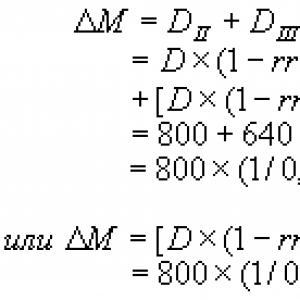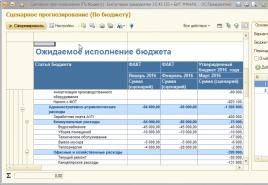Competitions at building exhibitions. Games and competitions for the builder's day. Counterargument: Bonuses from participation in contests can be significantly more important than even from one particular implementation.
04/26/2019
The conference "Development of housing construction in the Primorsky Territory" was held as part of the business program of the exhibition "City".
04/26/2019
An open conversation between college students and employers in the construction industry in Primorsky Krai about the demand for blue-collar jobs today and tomorrow was lively at the exhibition. The dialogue was organized by the representative office of the Agency for Strategic Initiatives in the Far Eastern Federal District.
04/25/2019
On the first day of the exhibition, as part of the business program, the Department of Housing and Communal Services and Fuel Resources of the Primorsky Territory held a Seminar on the issues of transition to a new system for handling municipal solid waste.
04/25/2019
The official opening of the 26th international construction exhibition "City" took place. Mikhail Vladimirovich Petrov, Vice-Governor of the Primorsky Territory, addressed the participants and guests of the exhibition with a welcoming speech.
04/24/2019
The Primorsky Territory Entrepreneurship Support Center organized the participation of Primorye companies in the 26th international construction exhibition "City".
04/23/2019
Managers, specialists and experts of the construction complex of the region are invited to discuss the development concept of the construction industry of the region, the state of the residential real estate market, new quality standards for comfortable housing.
On April 26, the regional conference "Prospects and conditions for the development of housing construction" will be held
The conference will be held from 11.00 to 16.00 within the framework of the 26th building exhibition "CITY" in the Fetisov Arena.
04/18/2019
Architects, designers and developers are invited to get acquainted with the new technology "Houses from" wooden brick ".
The presentation of the new technology will take place on April 26 from 13.00 to 14.30 at the 26th building exhibition "CITY", KSK "Fetisov Arena".
04/17/2019
The Agency for Strategic Initiatives in the Far Eastern Federal District and the Far Eastern Federal University (FEFU) invite leaders and specialists of the construction industry of the region to take part in a direct dialogue "Training for the construction industry in Primorsky Krai", which will be held on April 26 from 11.00 to 12.30 as part of the 26th construction exhibition "CITY at the KSK Fetisov Arena.
04/16/2019
MKU "Entrepreneurship Development Center" in Vladivostok invites you to the seminar "Fire Safety" and the master class "The whole truth about public procurement in 2019. Technologies for effective participation in public procurement."
The seminar and master class will be held on April 25, 2019 as part of the 26th construction exhibition "CITY" in the Fetisov Arena CSC.
04/15/2019
And about. Director of the Department of Urban Development of the Primorsky Territory - Vladimir Leonardovich Maran held a meeting of the organizing committee of the 26th building exhibition "CITY".
The organizing committee discussed the business program of the exhibition.
04/15/2019
The issues of creating a comfortable urban environment and waste recycling will be discussed at the City exhibition.
A press conference with the participation of Acting Vice-Governor of the Primorsky Territory Elena Aleksandrovna Parkhomenko, Director of the Center for Entrepreneurship Development Elena Viktorovna Novgorodova and General Director of LLC "Dalexpocentre" Vera Sergeevna Ermilova was held at the Administration of the Primorsky Territory on the eve of the 26th international construction exhibition "City".
04/11/2019
Vladivostok entrepreneurs are invited to take an active part in the XI annual city competition
"Entrepreneur of the Year"
Contests for the Builder's Day with thematic tasks will entertain all those present at the holiday. Active games and competitions for speed, dexterity and skill will give the participants a gambling mood and unrestrained fun. Witty jokes and pranks will support the incendiary atmosphere of the holiday and make the event unforgettable.
Game "Project of a three-story house"
Game-entertainment. 8 people participate. The host gives each participant a piece of paper on which a part of the house is written: the wall of the first, second, third floor, the roof, three windows of the first, second, third floor or doors. Then he blindfolds them.
Players take turns approaching the drawing paper and draw the part of the house that fell to them. The task is complicated by the fact that they do not see where to draw. After all the participants cope with the task, they remove the bandages and look at their "masterpiece".
3 pairs of builders participate in the competition. In each of them, a work manager and an assistant are selected.
In front of each couple, there is a cucumber, a tomato, a pepper, a cutting board, a knife and a bowl on the table. The task of each leader is to cut vegetables as quickly as possible and put them in a bowl with the hands of a helper.
After the “start” command, the helper takes a knife in his hand, but does nothing on his own. The leader must put his hands on the helper's hands and, controlling them, cut the vegetables and put them in a bowl. The pair that completes the task faster wins.
2 teams of builders compete in the competition. In front of each group of participants, at a certain distance, the facilitator places an easel with an attached drawing paper. Each contestant receives a pencil.
After the leader’s signal “start”, the first players of both teams run to their paper, draw one square for the tower at the bottom of the sheet and return back to pass the baton to the next participant. The task of the contestants is to draw squares on top of each other and as quickly as possible. After the stop signal, the competition ends. The facilitator counts the number of squares in the drawing of each team. The group of participants with the highest tower - with the largest number of squares - wins.
The game "I can build ..."
2 pairs of builders play. Participants sit opposite each other. After the leader’s command “start”, they begin to take turns naming structures that they could build. For example: the first player says: “I can build a house”, the second: “I can build a garage” or the first: “I can build a cottage”, the second: “I can build a bathhouse”. The first round of the game lasts 2 minutes. After the time has elapsed, in each pair, the participant who came up with fewer structures is eliminated.
In the second round, the winners of each pair compete with each other. It also lasts 2 minutes. Competitors are not allowed to say the names of the structures that they said in the first round. The builder who names more structures wins.
Three builders participate in the competition. Participants must demonstrate their skills in construction. Only they will have to build not from the usual brick, but from chocolate.
For the competition, you need to prepare 6 chocolate bars of the same size and carefully break them into squares. Each participant receives 2 tiles.
The task of the contestants is to build a tower, laying out a square on a square. The winner is the builder whose chocolate tower is the tallest and can stand after the last piece of chocolate is laid out.
Game "Helmet"
The whole friendly team of builders plays. Participants should stand in a circle. After the leader’s command “start”, cheerful music is turned on.
Players must take turns putting on the helmet, taking it off and passing it to each other. Takeoff game. The builder who still has his helmet on after the music has stopped is out. The game continues until the last player. He becomes the winner.
You can’t cheat, don’t wear a helmet while the music is playing. If the host notices dishonesty on the part of the player, he is automatically eliminated from the game.
2-4 people participate in the competition. The facilitator places a box of matchboxes without matches in front of the participants.
The task of the contestants is to build a house out of boxes using glue. In the house, it is imperative to make windows in the wall, build a roof and build doors. The task is given 5-10 minutes, depending on how the participants cope.
After the time has elapsed, the presenter or the audience determines the best stacker, who neatly and beautifully stacked the bricks of the built house. The winner receives the title of "best mason".
The competition involves 2 teams of 5 people each. They stand in 2 lines in front of the start line. The host gives the teams a shovel. Next to the start, next to each group of participants, there is a box with inflated balloons (with the same number of balloons). There is a trolley at a distance of 2 meters from each team.
The task of the participants is to take turns using a shovel to get a ball out of the box, carry it on a shovel to the cart, put it in it and return back to pass the baton to the next teammate. The ball must be carried very carefully. If it falls, the participant starts the relay again, from the starting point. You cannot hold the ball with your hands.
The team that fills their wheelbarrow with balloons the fastest wins.
The competition involves 2 or 3 people. On the table in front of each participant, the facilitator places a biscuit in the form of sticks or thin straws and whipped cream. Then he blindfolds each contestant. The task of the participants is to lay out a cake house from cookies (logs) and cream (connecting layer) by touch.
The history of competitive practice in architecture spans not even decades, but centuries. And all this time there are active discussions - is the game worth the candle? Not even in terms of whether competitions are needed or not: it is always a pleasure to argue on this topic. A much more difficult choice is whether a particular bureau should participate in them. Due to the fact that in Russia in recent years the number of competitions has increased dramatically, this issue has become especially relevant. archspeech analyzed the accumulated experience and diverse opinions - and today we offer you a detailed report on all the arguments and counterarguments.
Argument: Competitions are profitable for clients, but unprofitable for architects
It really is. Even if winning the competition leads to a sale, your costs (and is your working time worth something?) will be disproportionately higher than the fee received in the end. Competitions are always work for the future, although sometimes very vague. While for the customer - solid pluses and savings: several free concepts or projects at once (or received at an initially low cost).

Counterargument: If you're in business to make money, then architecture probably isn't for you.
Do you often see the names of architects on the Forbes list? Here we are, no. And it is obvious to every sane person that architecture is not even in the TOP-10 in the ranking of the most profitable businesses. If you go through dozens of answers to the question why this or that architect chose this particular profession, you will find a lot of options. And about helping people, and about the joy of creation, and about love for beauty. But not a single one is about personal material gain.

After all, where, if not competitions, will you have a chance to show all your imagination without being limited by the budget and other technical parameters? If you are young, then this is a great start, and if you have just made a "work" for several thousand square meters, you just need a creative shake-up. You can’t allow yourself to get bogged down in a routine - otherwise, apart from the “work”, nothing else will shine for you.
As for the lowering of the status of the profession (architects, it turns out, are ready to work for free!), It can be quite the opposite. Exhibitions and public discussions are organized around high-profile competitions, where architects have the opportunity to demonstrate the significance and importance of their work, the depth of analysis and the responsibility of their approach.

Argument: Too many works are sent to open competitions. The jury is simply not able to delve into each of them, and the choice of the winner is random and biased.
Recall that there are so-called closed tenders, in which the investor-customer invites participants directly. Usually these are architectural firms that have already proven themselves in the market, and their work, regardless of the result, is paid to one degree or another. In open competitions, the situation is different: everyone can take part, and the monetary reward, at best, awaits only the finalists. Often the main prize is a contract for implementation (or even just the possibility of concluding it), that is, only one of many comes out the winner.
It is curious that many people who talk about the problems of open competitions remember in Helsinki, which received a record number of applications - 1715. And after the painful selection of first 6 finalists, and then a single winner, there is a chance that the museum is not that will be built according to the project that won first place, but in general.

Well, such a problem really exists. However, when it comes to status competitions, they almost always place absolutely all application projects on web resources. If your work is objectively good, it will certainly be noticed and noted, even if it will not be members of the jury. And if your portfolio already has a sufficient number of projects, then we can recommend taking part in competitions with several stages, where a simple portfolio is enough for the first one. Only selected teams will reach the stage with projects, and the jury will most likely have time to study their work in detail.
Counterargument: Absolutely any competition is more of a lottery than an objective assessment of the participants. Even if their number is limited
In fact, it is better to immediately accept the fact that the result of the competition is a matter of chance. Let the participants not be 1000, but 10 - it does not matter. There are too many influencing factors - starting with the competencies and worldviews of the jury members and ending with the customer's expectations (which may turn out to be a secret for him).

For example, the jury can choose a project, impressed by the innovativeness of the idea or presentation, and then the customer, having weighed everything, decides that the implementation of the project is unreasonably expensive, and chooses another competitive project (or simply quietly orders a new one on the side).
It happens that it doesn’t come to this, and even at the voting stage, the customer honestly says: “Yes, we wanted new and fresh ideas, yes, well done guys and thanks to everyone, but we still need to choose not the newest and freshest, but what we will be able to build it inexpensively in the end.” In such cases, too, an unpleasant aftertaste remains and the results cause general disappointment, there are rumors about the predestination of the decision and the venality of the jury. Sometimes not without reason - but the reasons can be much more prosaic.
Some bureaus, having gained such a negative experience, renounce participation in open tenders and choose exclusively closed ones.

However, this approach is not a panacea, and the rules of the "lottery" continue to operate. It's good, of course, that you get paid anyway. But usually these amounts do not cover all expenses: even if we assume that the work of an architect is free (which is not true), you will have to spend money on presentation materials, layouts, videos, etc. And as before, nothing will prevent the customer from going broke or changing his mind - and not building anything. With such a lack of results - and with all the same effort expended - open competitions can be even more profitable: they are often widely covered in the press and cause much more public outcry.

Argument: Open contests are not about implementation at all: most often they are contests of ideas
Again, this is hard to argue with. True, this is usually not a surprise to anyone: the conditions of the competition clearly indicate that the winning concept will only become the basis for further design decisions. So, if even the illusory prospect of realization is important to you, carefully consider everything before participating.

Unfortunately, no one is insured: you have to be prepared for the development of events not in your favor, even for participants in large-scale and, in general, serious competitions - those related to master planning, reprogramming and development. Due to the fact that any such project involves complex and vast areas and involves a large number of stages, solid budgets and time frames calculated in years, it is almost never implemented in its original form.
Counterargument: In contests of ideas, the main thing is not winning (implementation), but participation
However, the probable “unrealizability” does not stop many, and the mere participation in such competitions as the embankment of the Moscow River or the Kaban Island in Kazan is considered a status, prestigious and, in general, a useful exercise that allows you to immerse yourself in an interesting and relevant topic.

After all, competitions are often of a social or narrowly focused nature: designing or refugee camps, designing in permafrost conditions - or the atmosphere of Mars. Such topics require interdisciplinary research related to physics, biology, history, chemistry, sociology - a great opportunity for self-development! And a way to constantly stay "in the stream" of modern trends and methodological approaches.

The flying domes of Richard Buckminster Fuller, the vertical cities of El Lissitzky - many image projects that no one has ever even tried to implement, we still remember and study along with great architectural buildings. Because ideas—especially ideas that anticipate the future—are just as valuable. And isn't that the best compensation and reward?
Argument: Contests are a waste of not only money, but also time. There are plenty of other ways to spend it much more efficiently.
This position is not unfounded - especially its second part. If you are lucky enough to quickly find "your" customer, with whom mutual understanding will be established and fruitful cooperation will develop, then this can work much more "impactly". Word of mouth has not been canceled, and investors-developers, by and large, trust each other's opinion more than the judgment of "all sorts of architectural critics" who sit on the competition jury. There is a real chasm of problems between idea and implementation, and "practitioners" will always give preference to those who have crossed this chasm at least once.

Counterargument: Bonuses from participation in contests can be significantly more important than even from one particular implementation.
Now let's imagine that you are a young creative bureau looking for a way to make yourself known, and the chance of getting a real order will not present itself. It is clear that there are many others that we have already talked about, including the great potential. But, according to the unanimous opinion of professionals, the effectiveness of competitions as the notorious "social lifts" is still out of competition, pardon the tautology. Rather than sit and “create at the table”, it is always better to decorate your portfolio with a bright “about” project. And it is not so important that you do not win or enter the short list - you will already have something to show to a potential customer. Because the competition always has a customer, as well as a technical task. Therefore, working on a competitive project is an excellent “training” for an architect.

For novice “competitors”, the advice may be this: do not rush to the first open competition of ideas that comes across without the need for a monetary contribution (abroad, many youth competitions are paid), but choose an object that would be both interesting to you and potentially promising. That is, if, for example, you know about the market need for improvement projects (as it is now in Moscow) or reconstructions of modernist monuments - and you feel the strength to work in this area - look for a competition on a similar topic. You will gain useful experience and, quite likely, earn a reputation among potential customers - even if you do not win. About the real story of this kind, we, for example, Sergey Trukhanov from the bureau T + T Architects.
By the way, the “pull-take-risk guy” test is also suitable for employees of an existing large bureau. The stressful conditions in which work on a competitive project puts it perfectly reveals the connections between employees and shows who is worth what individually and in a team.
This is also a reason to improve your technical skills: perhaps it is the competition that will inspire you to finally get to that curious graphic program that you have long wanted to master and try out the project presentation technologies that you saw at the last conference. A few resources to help you in this endeavor.
Finally, competitions are a chance to work in large consortiums, including international ones. And these are new connections, and useful professional experience (foreign architectural firms have a lot to learn), and a significant column in your resume: many Russian developers still like to promote projects “from foreign stars”. However, whoever was the author of the sketch for a beautiful press release, in fact Russian companies are engaged in the design. And investors are looking for those bureaus that have already worked with foreigners for these purposes.

That is, we can say that competitions help to ensure the "continuity of generations." Even within one fairly large bureau, this is a normal practice: not managers who, roughly speaking, have already “played enough” work on competitive projects, but a team of the youngest is recruited. Compared to other young people among the contestants, they have a significant advantage: a solid portfolio of their own company. And, of course, the sensitive guidance of more experienced colleagues in the process - such an express workshop in terms of the amount of knowledge and skills gained can easily replace a year of a “regular” internship.
Instead of a conclusion
As you can see, there is no unequivocal answer to the question of whether to participate in competitions, and cannot be. You will have to weigh all the pros and cons given in the context of a particular architectural competition and your professional situation on your own. But one way or another, the key to success in the profession of an architect - as in any other - is to be an excellent specialist.

Header image: Foster + Partners office
Builder's Day is celebrated on the second Sunday of August. And almost every team of builders celebrate their professional holiday. And what a holiday without themed games, contests and tasks. Only a well-spent holiday will be remembered by each of the workers. We present a selection of games and competitions for the builder's day.
Game "Building a house in the blind"
To play the game you will need:
scarf - 8 pieces;
parts of the house printed on separate sheets;
whatman;
felt-tip pens of different colors - 8 pieces.
So, for this game you will need eight people. The facilitator distributes to each a piece of paper with a part of the house - the wall of the first floor, the wall of the second floor, the wall of the third floor, the windows on the first floor, the windows on the second floor, the windows on the third floor, the doors and the roof. We give each a felt-tip pen, and blindfold. What the game is about: each of the participants must go to the drawing paper and draw that part of the house that they had written. The task is not easy. After all, the eyes of all participants are blindfolded. Those sitting in the hall are watching everything that happens. After all the participants have drawn, the presenter unties their eyes and shows what they have created. Each participant is given a souvenir.
Competition "The best leader of the evening"
For carrying out you will need:
fresh cucumber;
fresh tomato;
bell pepper:
cutting board;
chef's knife;
plastic bowl.
The facilitator chooses 3 pairs of participants. In each of the pairs, it is necessary to decide who will be the leader and who will be the assistant. Before each pair of participants, the facilitator lays out all of the above. The conditions of the competition are as follows: by the hands of an assistant, each of the leaders had to cut all the vegetables and put them in a plastic bowl. The helper at this time does nothing himself, he can only pick up a knife and a product, but the leader, controlling his hands, makes all the necessary movements. The winner is the pair whose faster and better cope with the task.
Contest "Building a skyscraper"
For the competition you will need:
whatman;
colored markers.
All comers are divided into two teams with an equal number of participants. We attach drawing paper at a certain distance, and give each of the participants colored markers.
The host gives a signal that indicates the beginning of the competition. Each of the participants must run up to the drawing paper and draw a square. This is all done in the form of a tower, until the host stops the competition. Then the number of figures for each team is counted. The team with the most geometric shapes won. Each participant is awarded with memorable prizes.
The game "I can build ..."
This game requires 4 people. We combine them in pairs. The host gives a command, and each of them, in turn, voices the structure that he could build. We give an example: "I can build a garden" and so on. The game is played in two stages. The first lasts no more than 2 minutes. The leader must count the number of structures built. Whoever named the least gets a small memorable surprise and leaves the competition. We combine the winners in a pair, and continue the competition. Time is two minutes. Whoever named the most wins, and he is awarded the title of "Best Builder of the Evening". For a more interesting game, you can disable the pronunciation of names that have already been.
Competition "Sweet Tower"
To carry out you will need the following:
milk chocolate bars - 6 pieces.
Before the start of the competition, the host must break two chocolate bars into three plates. So, we call three wishing. The organizer announces the conditions of the competition: it is necessary to build a chocolate tower from this material. The one who builds faster, and whose tower will stand and not fall, wins. All participants receive memorable prizes.
Game "Helmet"
An entertaining game designed for the entire team of builders. The organizer of the holiday invites everyone to stand in a circle. After the command, cheerful energetic music sounds, each of the players must put the helmet on his head, take it off and pass it on to another. After a while, the music stops and whoever is wearing the helmet is out. The game is based on elimination. The winner is the one who is left alone with a helmet. Such a player receives the title of "Most dexterous". If the organizer noticed that someone is cheating, then he has the right to automatically remove the player.
Contest "Let's build brick by brick"
For carrying out you will need:
empty matchboxes;
PVA glue.
Two participants are invited for the competition. Empty matchboxes and glue are laid out in front of them. The task of the participants is that they must build a house. A prerequisite: the house must have windows, a roof and doors. You have ten minutes to complete the task. The winner is determined by audience voting. Whoever has the best and neatest house is the winner. Such a player receives the title of "Best Stacker of the Night". The rest of the players receive commemorative prizes.
Competition "The most dexterous porters"
Empty carton;
balloons (pre-inflate);
wooden shovel;
trolley, or plastic basket.
To participate, you need to gather two teams of four to five people. In front of each of the teams we put a box with inflated balloons, we give out 1 shovel. We put a basket at a decent distance from them. So conditions. With the help of a shovel, each of the participants must transfer the ball from the box to the basket. You can not hold the ball on the shovel with your hands. If, he falls, then the participant starts all over again. So, each member of the team must do. The team that completes the task the fastest and best of all wins. We reward the winners with memorable prizes.
Competition "Have fun celebrating housewarming"
For carrying out you will need:
chair;
a bottle of wine (any);
glass;
fruit cut.
We are recruiting two teams: men and women. Place a chair in front of each team. All of the above is on it. Each of the participants, at the command of the leader, must run up to the chair to pour an alcoholic drink, and bring it to the second participant, the second participant drinks and runs to have a snack, and so on in a chain. The team that drinks the entire bottle of alcohol the fastest wins.
Competition "Unusual construction"
To do so, you need the following:
sweet cookies in the form of sticks;
whipped cream;
scarf.
We choose two to participate. In front of each of them, the host puts cookies and cream on the table. We tie everyone's eyes. Conditions: build a cake in the form of a house from the available funds. The winner is chosen by audience voting, and of course, who did the best to cope with the task. The winner receives the title "Sweet Tooth of the Evening".
Contest "Build a castle out of thin air"
For carrying out you will need:
Balloons;
double sided tape;
scissors.
We are recruiting two teams of 4 people. We give each of them balloons, after inflating them, and adhesive tape. Conditions of the competition: make a house or a castle from the materials at hand. The time limit for completing the task is four minutes. At the end of the time, you need to present your castle to the audience, coming up with a name for it. Those participants who have shown great originality in this competition win.
Competition "Designers"
For the competition you need:
whatman;
photographs of various construction projects.
We select two people for the competition. We cut a hole in the Whatman paper, the diameter of which is no more than six centimeters. Through this hole, participants should be able to see which project is shown in the picture. The presenter moves the pictures themselves, or you can ask someone for help from those sitting in the hall.
Competition "The best painter of the evening"
For carrying out you will need:
toilet paper roll - 4 pieces;
spray guns (sprayers) with tinted water.
stool.
We are looking for four people to participate. We set a stool in front of each of them, give toilet paper and a paint sprayer. Competition conditions: everyone must wrap a chair around with toilet paper so that no gaps are visible. Then we paint it with "paint". The winner is the one who completes the task faster and better than everyone else. The winner receives the title of "Best Painter of the Evening", and all other participants will receive memorable surprises.
Holiday greetings: Builder's Day
The Moscow Building Complex has a tradition of holding and participating in annual professional skill competitions, which determine the best representatives of the construction industry - those who have achieved the highest results in their work or made a significant contribution to the development of the Construction Complex and improving its investment attractiveness.
Competitions are held in accordance with the regulations approved by the Mayor of Moscow Sergei Sobyanin, his deputy for urban planning policy and construction Marat Khusnullin and heads of divisions of the Construction Complex.
The main goal of any of the competitions is to raise the prestige of highly skilled labor and tell about the achievements of the investment and construction community. As practice shows, the struggle for the right to be called the best among professionals in their industry serves as a powerful incentive for an employee to improve their skills and improve their qualifications.
Many of the construction competitions have more than a decade of history. During the course of the event, each of them, dynamically developing, reached a qualitatively new level: new nominations appear every year, the circle of participants and their specialization expand, and the parameters for evaluating participants improve.
Evaluation criteria are performance indicators of the participants and the level of their professional training. In separate competitions, the productivity of an employee is evaluated; the quality of projects implemented in Moscow; working conditions at a construction company, etc. Achievements of particularly distinguished contestants who did not become prize-winners may also be awarded by the jury with special prizes.
It is worth saying that the city authorities pay due attention to youth policy and work with young professionals, for whom competitions are also held in several categories. This approach forms the personnel policy and personnel reserve of Stroykompleks.
Winning organizations are awarded honorary diplomas and commemorative badges, workers who have become winners of competitions receive monetary rewards and are often recommended by company management for career advancement.
The awards based on the results of the competitions are traditionally held on the eve of the holidays - the City Day and the Builder's Day, the winners receive valuable awards and congratulations from the city administration and the management of the Construction Complex.







